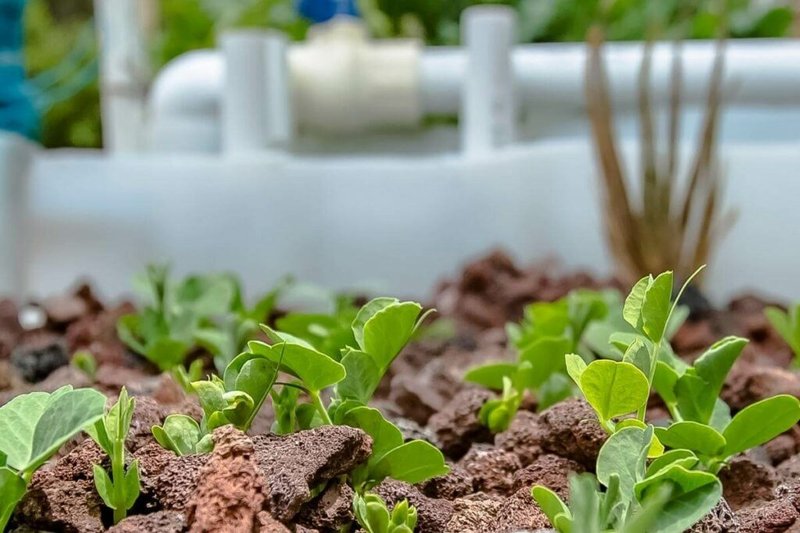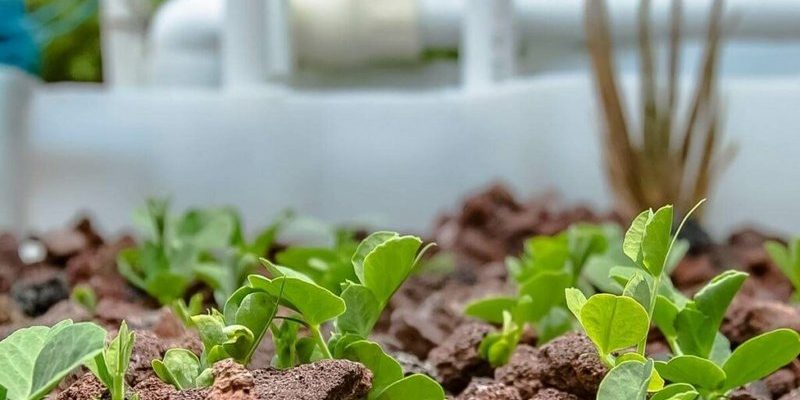
So, how do these little guys fit into the aquaponic puzzle? To understand this, let’s dive deeper into what aquaponics is and how earthworms can enhance it. Spoiler alert: it’s all about nutrient cycling and creating a balanced environment. It’s like a vibrant community where every member has a role to play.
What is Aquaponics?
Aquaponics is a sustainable method of farming that combines aquaculture (raising fish) with hydroponics (growing plants in water). It’s like a beautiful dance between two systems where fish waste nourishes plants, and plants keep the water clean for fish. Here’s how it works: fish produce waste that contains crucial nutrients for plants. The plants then filter the water before it returns to the fish tank. This cycle minimizes waste and makes efficient use of resources.
In an aquaponic system, you can grow a wide variety of plants, from leafy greens like lettuce to fruiting plants like tomatoes. The idea is to create a balanced ecosystem where fish and plants can thrive together, reducing the need for fertilizers and chemical inputs. It’s eco-friendly farming at its best!
Earthworms: Nature’s Little Helpers
Earthworms are fascinating creatures that play a vital role in soil health. They break down organic matter, aerate the soil, and improve water retention. You might think of them as tiny composters. Their digestion process transforms waste into nutrient-rich castings that plants absolutely love. So, what happens if you introduce these little workers into an aquaponic system?
Integrating earthworms into aquaponics can boost nutrient availability. Their castings are rich in **nitrogen**, **phosphorus**, and **potassium**, essential nutrients for plant growth. Additionally, earthworms help improve the microbial life in the system, creating a more balanced and thriving environment. Think of them as giving your plants a cozy nutrient-rich blanket to grow in.
How to Incorporate Earthworms in Aquaponics
If you’re considering bringing earthworms into your aquaponic setup, it’s important to do it right. First, choose the right type of earthworm. Red wigglers (Eisenia fetida) are the go-to choice for many aquaponic enthusiasts. They’re great at breaking down organic matter and can thrive in various conditions.
To add earthworms, you can build a separate worm bin that can be kept near your aquaponics system. This bin will serve as a composting area where organic waste from your kitchen, such as veggie scraps, can be fed to the worms. As they munch away, they’ll produce valuable castings you can eventually introduce to your system. Here’s a quick process to get going:
- Set Up a Worm Bin: Use a plastic container with holes for ventilation.
- Add Bedding: Shredded newspaper, coconut coir, or shredded cardboard works well.
- Feed the Worms: Give them kitchen scraps, avoiding meat or dairy.
- Harvest Castings: After a few months, collect the castings and add them to your aquaponic system.
The Benefits of Using Earthworms in Aquaponic Systems
Bringing earthworms into your aquaponic setup offers several advantages. For starters, they can significantly enhance **nutrient cycling** by breaking down waste materials faster. This ensures your plants get the nutrients they need without relying solely on fish waste.
Another perk is that earthworms help maintain a healthy balance in your system. They contribute to the microbial diversity, which is essential for nutrient uptake by plants. A healthy microbial community can combat disease and ensure your plants grow strong and resilient. Plus, earthworms can help with **water aeration**, which can improve root health, leading to better plant growth.
Finally, you may find that integrating earthworms into your aquaponic system creates a more sustainable cycle. By reducing waste and maximizing nutrient use, you’re not just benefiting your plants and fish; you’re also doing your part for the environment. It’s like creating a little eco-friendly paradise right in your backyard!
Earthworm Care and Maintenance
Let’s chat about keeping your earthworms happy. While they’re generally low-maintenance, there are a few things to keep in mind. First, ensure they have plenty of organic matter to munch on. If they run out of food, they can become sluggish or even die. A little regular feeding goes a long way.
Temperature also matters. Earthworms thrive in temperatures between 55°F and 77°F (13°C to 25°C). If they get too hot or cold, they might become stressed. So, monitor the conditions of both your worm bin and your aquaponic system.
Lastly, don’t forget about moisture. Earthworms need a damp environment to survive, but too much water can drown them. Aim for a moist but not soggy bedding mix in your worm bin. A little experimentation will help you find the perfect balance.
Potential Challenges and Considerations
Although earthworms can be incredibly beneficial to aquaponic systems, they’re not without their challenges. One common issue is ensuring that the earthworms don’t overpopulate. If they do, they can consume too much waste, leading to a nutrient imbalance. It’s essential to monitor their population and adjust your feeding accordingly.
Additionally, if you’re using chemical fertilizers in your aquaponic system, you’ll want to stop. Chemicals harm earthworms and the beneficial microbes they support. Stick with organic practices and rely on your fish and earthworm castings for nutrients.
Lastly, be patient! It takes time for the benefits of using earthworms to become noticeable in your system. But with some care and attention, you’ll likely see growth improvements in your plants and overall system health over time.
Wrapping It Up
Using earthworms in aquaponic systems can be a game-changer for both your plants and your fish. These little critters not only boost nutrient cycling but also help maintain a balanced ecosystem. By providing your earthworms with the right conditions, you can create a thriving environment that supports sustainable farming practices.
So, if you’re thinking about optimizing your aquaponic setup, consider welcoming earthworms into your garden. They might be small, but their impact can be mighty! Embrace the harmony between fish and plants with earthworms, and enjoy the fruits of your labor—literally! Happy farming!

